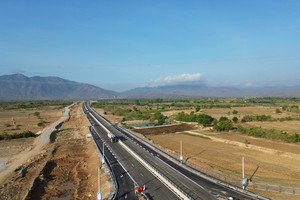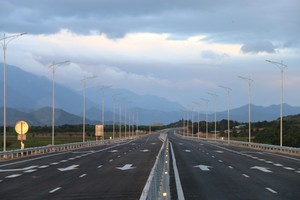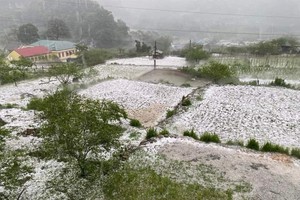The poverty rate has reduced dramatically in rural households from 27.1 per cent in 2012 to 13.2 per cent in 2014 while access to public services such as vocational and educational training and health care has improved.

This was revealed at a workshop held yesterday in Ha Noi to review a survey on rural household's access to resources.
The Viet Nam Access to Resources Household Survey (VARHS) was conducted between June and July last year in provinces Nghe An, Khanh Hoa, Lam Dong, Dak Lak, Dak Nong, Lao Cai, Dien Bien, Lai Chau, Phu Tho, Quang Nam, Long An and ex-Ha Tay.
According to the survey, the northern provinces of Lao Cai and Dien Bien have the highest poverty rates, with 44.3 per cent and 27.3 per cent respectively. Long An and Ha Tay have the lowest poverty rates with 11.7 per cent and 7.8 per cent respectively. The report called for better poverty reduction programmes to help reduce the gap between advantaged and disadvantaged regions.
The economic activity of rural households has diversified however agriculture is still the biggest source of income, accounting for 47.9 per cent of total income in 2014, the survey found.
The gap between Kinh and non-Kinh household heads in education level remains significant. Almost half of the surveyed Kinh household heads had completed lower secondary school, while for non-Kinh groups it was only 35.4 per cent in 2014. On average, poor household heads are less educated than their non-poor counterparts.
With growing industrialisation and restructuring of the economy, more people are leaving rural areas and migrating to urban areas. This trend was shown in surveyed provinces during the 2012-14 period. Most of them are young and in need of vocational training.
The migrant group faced difficulties in finding jobs, access to land and problems with health care, education, social services.
The number of migrants facing discrimination increased, with those from Lai Chau Province seeing a 28.9 per cent rise in discrimination.
Although the average income and living standards of rural residents has improved, the survey found that there is still a significant gap in income, access to public services and access to sufficient food between well-off families and less fortunate ones.
In comparison to 2012, the proportion of households worried about social issues in rural areas such as crime, theft, drug use, alcohol addiction and gambling is on the rise, the survey reported.
Participants at the workshop agreed that the government should address both rural economic development and social issues.
Nguyen Thi Tue Anh, deputy director of Central Institute for Economic Management (CIEM) said despite the fact that Viet Nam had remarkable growth over the past decade, there were issues that needed to be solved regarding the rural economy and the household economy.
She said the survey's results would also be a good resource for policy makers when they make plans for rural development.
Nguyen Thi Lan Huong, director of the Institute of Labour Science and Social Affairs said low income households who depend on agriculture production is a pressing issue to Vietnamese policy makers.
The first VARHS was conducted in 2002 and has been held every two years since 2006. The survey sample size has increased in each survey round with more than 2,200 households completing the survey in multiple rounds. There were 3,648 households surveyed in 2014 with questions focusing on income, savings, land possession, migration and education.
























